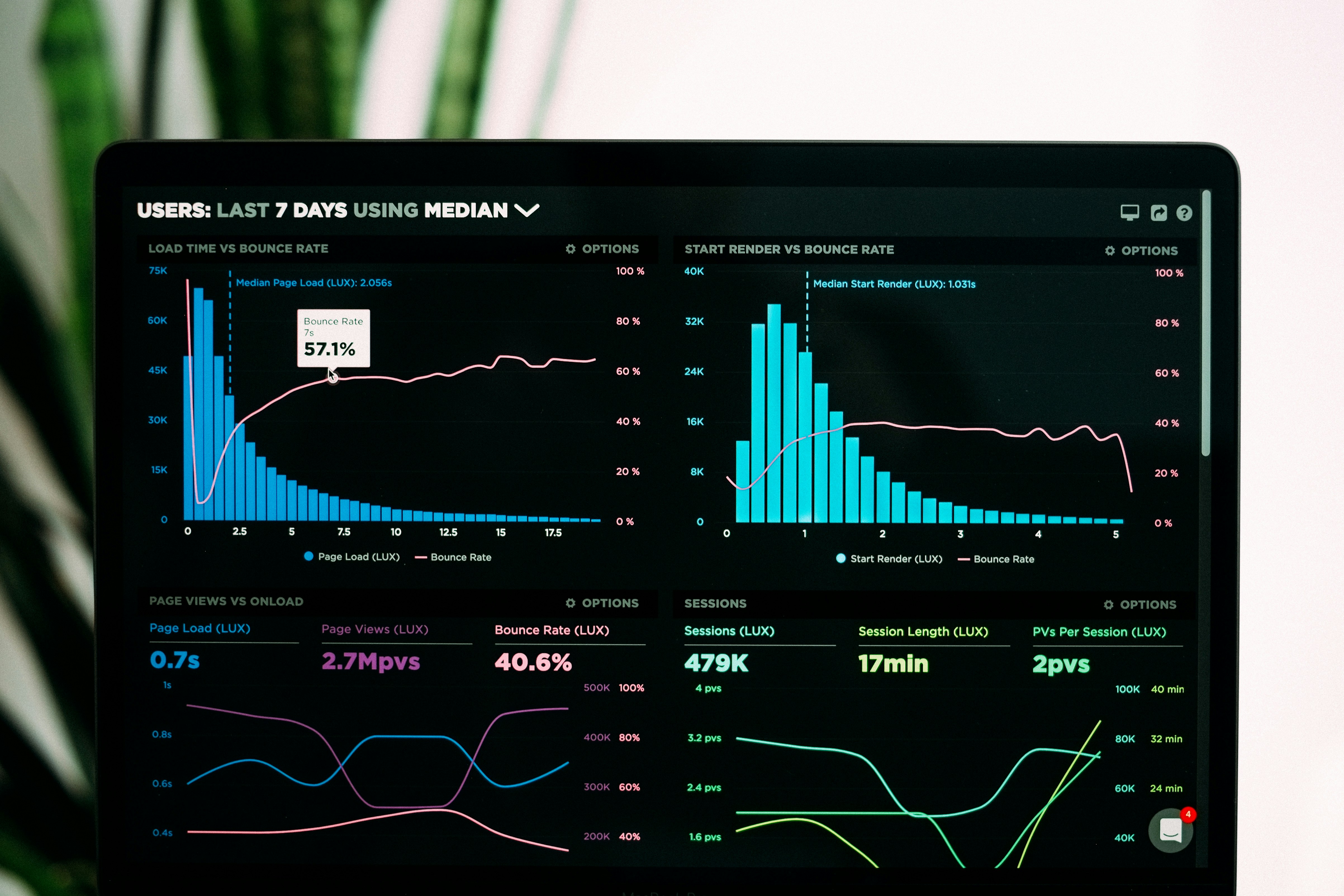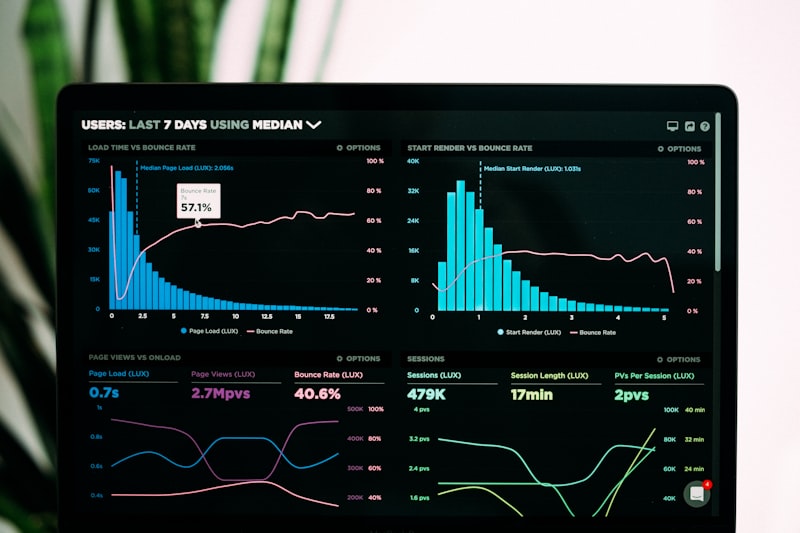Most digital marketing analytics implementations in Nepal miss critical local data points. Here's how to configure tracking that...
July 05, 2025
Most digital marketing analytics guides overwhelm you. For Nepali businesses, this guide focuses on essential metrics and practical...
July 03, 2025
In Nepal's evolving digital landscape, data is your most valuable asset. Discover how leveraging digital marketing analytics can...
December 28, 2024
Are you tracking the right numbers? This guide goes beyond vanity metrics to reveal the essential analytics KPIs...
December 20, 2024
A robust analytics setup is the bedrock of data-driven digital marketing in Nepal. This guide provides Nepali businesses...
December 15, 2024
Are you just reporting numbers or truly analyzing them? This post clarifies the crucial distinction between analytics and...
December 10, 2024
Are you just looking at numbers or truly understanding your business's digital performance? This post clarifies the fundamental...
December 05, 2024
Marketing automation can revolutionize your business, but only if done right. Discover the most common automation mistakes Nepali...
December 01, 2024
Timing is everything in digital marketing automation. Discover the optimal times to send emails and trigger automated campaigns...
November 25, 2024
Are your digital marketing efforts based on faulty data? Discover the most common analytics mistakes Nepali businesses make...
November 20, 2024
Your web host is the foundation of your online presence. Learn how to choose the right web hosting...
November 15, 2024
Moving beyond theory, discover how Nepali businesses have achieved significant growth through strategic Conversion Rate Optimization. These real-world...
November 12, 2024
Are your conversion efforts falling flat? Discover the most common CRO mistakes Nepali businesses make and learn how...
November 10, 2024
Dive deep into a real-world example of how strategic Conversion Rate Optimization transformed a Nepali business's online performance,...
November 08, 2024
Are your conversion rate optimization efforts not yielding results? Discover the most common CRO failures in Nepal, from...
November 05, 2024
Are your website visitors leaving without converting? Discover how Conversion Rate Optimization (CRO) can help Nepali businesses turn...
October 30, 2024
Unlock the secrets to higher conversions! This comprehensive CRO guide provides Nepali businesses with a step-by-step strategy to...
October 25, 2024
CRO and PPC are often seen as separate, but they're a powerful duo for digital marketing in Nepal....
October 20, 2024
In Nepal, a successful digital marketing strategy goes beyond technical SEO and ad spend. Discover how understanding local...
October 15, 2024
Generic PPC campaigns fall flat in Nepal. Discover how to integrate cultural nuances into your Pay-Per-Click advertising strategy...
October 10, 2024
Move beyond guesswork. Discover how Nepali businesses can leverage data to make smarter, more effective decisions, optimize digital...
October 01, 2024
Raw data is just numbers. Learn how to transform complex data into compelling narratives that drive action and...
September 25, 2024
Despite rapid growth, e-commerce in Nepal faces unique challenges for digital marketing. This post delves into the key...
September 15, 2024
Want your online store to rank higher in Nepal? This guide to E-commerce SEO in Nepal covers everything...
September 10, 2024
Your emails are a direct line to your customers. Learn how to design engaging, mobile-responsive emails that resonate...
September 05, 2024
Are your email campaigns in Nepal falling flat? Discover the most common reasons why emails fail to reach...
August 30, 2024
Email marketing is powerful, but are you compliant? This guide explores the evolving landscape of email laws and...
August 25, 2024
Are your email campaigns falling short? Discover the most common email marketing mistakes Nepali businesses make, from poor...
August 20, 2024
Unlock the full potential of email marketing for digital marketing in Nepal. This comprehensive guide covers everything from...
August 15, 2024
Email marketing consistently delivers high ROI, but how do you measure and maximize it for digital marketing in...
August 10, 2024
Are you tracking the right numbers in your email campaigns for digital marketing in Nepal? This guide delves...
August 05, 2024
Your email subject line is your first impression. Learn how to craft compelling subject lines that resonate with...
August 01, 2024
In Nepal's digital landscape, both email and social media are powerful for digital marketing. But which is better...
July 25, 2024
Are your Facebook Ads in Nepal delivering optimal results for digital marketing? This comprehensive audit checklist helps businesses...
July 20, 2024
Struggling with your Facebook Ads budget in Nepal? Learn strategic approaches to allocate your ad spend effectively, reduce...
July 15, 2024
Stop chasing vanity metrics. Discover practical, culturally-relevant strategies to build a high-quality email list in Nepal and turn...
July 14, 2024
Are your Facebook Ads in Nepal underperforming? Discover the most common Facebook advertising mistakes in digital marketing, from...
July 10, 2024
Are your emails getting ignored? Discover the top 5 reasons why email marketing fails in the unique Nepali...
July 05, 2024
Unlock the power of Facebook Ads for digital marketing in Nepal. This comprehensive guide covers everything from setting...
July 05, 2024
Discover why working with a local SEO expert in Nepal gives your business an unfair advantage in Google...
July 01, 2024
Google Ads and Facebook Ads are powerful, but fundamentally different for digital marketing in Nepal. Discover which platform...
July 01, 2024
Discover actionable strategies for social media success in Nepal's unique digital landscape. Learn which platforms perform best, how...
June 30, 2024
What works for a national brand often fails for a local shop—and vice versa. Here's what I've learned...
June 26, 2024
Transitioning to GA4? This comprehensive guide provides Nepali businesses with a step-by-step approach to understanding, setting up, and...
June 25, 2024
The Universal Analytics sunset is here. This guide provides Nepali businesses with a clear roadmap for GA4 migration,...
June 20, 2024
Discover why authentic digital marketing beats viral content in Nepal. Learn sustainable marketing strategies, authentic brand building techniques,...
June 18, 2024
Discover why continuous upskilling is essential for digital marketing success. Learn about skill-based learning strategies, professional development approaches,...
June 17, 2024
Discover the best platforms to build and sell your online course in 2025. Compare comprehensive course creation tools,...
June 16, 2024
Discover how digital marketing skills are transforming online education in 2025. Explore the intersection of marketing expertise and...
June 15, 2024
Want to grow your Instagram presence for digital marketing in Nepal? Discover actionable strategies, from content creation to...
June 15, 2024
Discover proven A/B testing success strategies with real-world Nepal case studies. Learn conversion optimization techniques, testing methodologies, and...
June 10, 2024
Your landing page is where conversions happen in digital marketing in Nepal. Discover essential best practices for designing...
June 10, 2024
Comprehensive conversion rate optimization checklist specifically designed for Nepali businesses to maximize website performance and ROI
June 08, 2024
Beyond theory, discover how Nepali businesses have achieved significant growth through optimized landing pages. These real-world digital marketing...
June 08, 2024
See how real Nepal businesses transformed their digital marketing performance using analytics insights. Discover proven strategies that boosted...
June 07, 2024
Ensure your analytics data is accurate and actionable with this comprehensive audit checklist. Discover the critical steps to...
June 06, 2024
Email automation delivers 42% higher open rates in Nepal compared to bulk emails. Discover how local businesses are...
June 05, 2024
Are your landing pages underperforming in digital marketing in Nepal? Discover the most common landing page mistakes Nepali...
June 05, 2024
Navigating analytics can be complex for Nepal businesses. This comprehensive guide identifies common data challenges and provides practical...
June 04, 2024
Are your digital marketing efforts falling flat? It might be due to flawed data. This post uncovers the...
June 03, 2024
Generic Google Ads campaigns won't cut it for digital marketing in Nepal. Learn how to localize your Google...
June 02, 2024
Unlock the power of your data! This comprehensive guide provides Nepali businesses with a step-by-step approach to setting...
June 01, 2024
Generic Google Ads campaigns won't cut it for digital marketing in Nepal. Learn how to localize your Google...
June 01, 2024
Generic PPC campaigns won't cut it in Nepal. Learn how to localize your Pay-Per-Click strategy to precisely target...
May 28, 2024
For Nepali businesses, local SEO is no longer optional. Discover how to optimize your online presence to attract...
May 20, 2024
Generic marketing won't cut it. Discover how to precisely target your audience in Nepal by understanding their unique...
May 15, 2024
Generic targeting falls short in Nepal. Learn how to go beyond basic demographics to understand the unique cultural,...
May 10, 2024
Beyond just revenue, what truly defines success for Nepali businesses? Discover the essential metrics and KPIs that provide...
May 05, 2024
Ready to launch your online store in Nepal? This comprehensive guide covers everything from platform selection to digital...
April 30, 2024
Want your online store to rank higher in Nepal? This guide to Nepali E-commerce SEO covers everything from...
April 25, 2024
Email communication in Nepal has its own unique nuances. This guide explores the cultural factors influencing professional emails,...
April 20, 2024
Are your email campaigns in Nepal getting lost in the inbox? Discover actionable strategies to boost Nepali email...
April 15, 2024
Beyond just sending emails, truly effective email marketing in Nepal requires understanding how and when your audience checks...
April 10, 2024
Influencer marketing is booming in Nepal. Learn how to identify the right Nepali influencers, build effective collaborations, and...
April 05, 2024
Beyond open rates and clicks, truly effective email marketing in Nepal requires understanding the psychology of your subscribers....
April 01, 2024
Beyond statistics, truly effective digital marketing in Nepal requires a deep dive into how and why Nepalis interact...
March 25, 2024
Social media can be a powerful tool, but it's also a minefield. Discover the most common social media...
March 20, 2024
Stay ahead in Nepal's dynamic digital landscape. Discover the latest social media trends shaping consumer behavior and learn...
March 15, 2024
When is your Nepali audience online? Understanding Nepal's unique internet traffic patterns is crucial for optimizing your digital...
March 10, 2024
Are your PPC campaigns in Nepal underperforming? This comprehensive audit checklist helps businesses analyze their Google Ads and...
March 05, 2024
Is your website struggling to rank in Nepal? Discover the most common SEO mistakes Nepali businesses make, from...
March 01, 2024
Beyond just features and benefits, truly effective digital marketing in Nepal taps into the human mind. Discover powerful...
March 01, 2024
Unlock the power of paid advertising in Nepal. This comprehensive PPC guide covers everything from setting up your...
March 01, 2024
PPC and SEO are both powerful, but fundamentally different. Discover which digital marketing strategy is best suited for...
February 25, 2024
Beyond demographics, truly effective digital marketing in Nepal requires understanding the unique psychology of Nepali buyers. Discover the...
February 20, 2024
Planning a website for your Nepali business? This guide breaks down the factors influencing web development cost in...
February 15, 2024
A website is an investment, but many fall short. Discover the most common web development failures in Nepal,...
February 10, 2024
In Nepal's competitive digital landscape, a fast website is non-negotiable. Discover why website performance matters for your business,...
February 05, 2024
WordPress is a powerful platform for building websites in Nepal. Discover why it's a popular choice for businesses,...
February 01, 2024
Are your digital marketing efforts based on flawed data? Discover the most common reasons why analytics fail in...
January 28, 2024
WordPress powers millions of websites, making it a prime target for cyber threats. Learn essential WordPress security best...
January 25, 2024
Are your Google Ads campaigns in Nepal draining your budget without results? Discover the most common reasons why...
January 20, 2024


